new posts in all blogs
Viewing: Blog Posts Tagged with: the writing process, Most Recent at Top [Help]
Results 26 - 50 of 280
How to use this Page
You are viewing the most recent posts tagged with the words: the writing process in the JacketFlap blog reader. What is a tag? Think of a tag as a keyword or category label. Tags can both help you find posts on JacketFlap.com as well as provide an easy way for you to "remember" and classify posts for later recall. Try adding a tag yourself by clicking "Add a tag" below a post's header. Scroll down through the list of Recent Posts in the left column and click on a post title that sounds interesting. You can view all posts from a specific blog by clicking the Blog name in the right column, or you can click a 'More Posts from this Blog' link in any individual post.
{{ I am chronicling 48 days of writing before my July 31 travel. If you are chronicling your summer writing/days, I'd love to hear/see what you're doing. Please link to your work/blog/etc in the comments (or just comment!) so all can see. We'll cheer one another through. Strength to your sword arm! }}
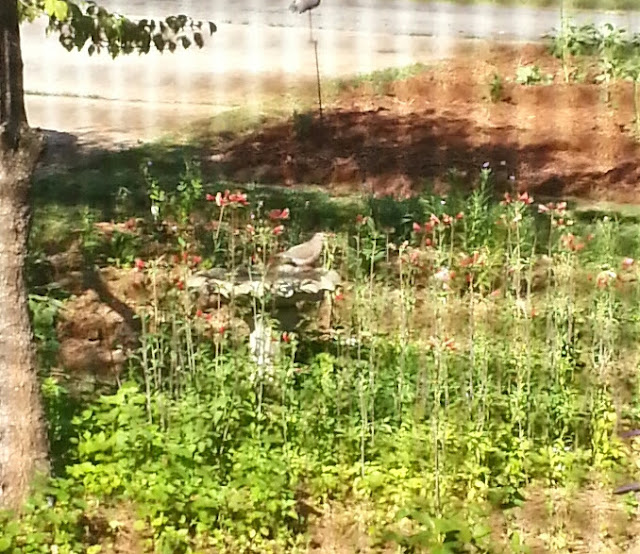 |
| Mourning dove, through the screen door. I tried to get closer, to capture it without the screen between us, and to get the hummingbird and wasps, but they were not having it. |
I wish you could have seen the party at the birdbath in my garden this morning: one mourning dove (very big), one hummingbird (very small), and three red wasps (tiny!), all vying for turns at fresh water. I tried to take a photo, but of course they wouldn't sit still for me to do that. Yesterday when I filled the bath, five red wasps were right there, waiting for me to finish, as well as a bee. (Yay, bee! Bring your friends!)
It makes me so happy to see the life in the garden, even when it's the birds that I have to shoo away from the blackberries each morning. I have planted enough berries for them and enough for me.
Enough for them and enough for me. That's what I'm thinking about today as I write. How much of a draft/revision is enough for those who will read it, and how much is enough for the one who writes it? And then there are the gatekeepers who make some of those final decisions, once we get a final draft and the book goes into production... editors, publishers, marketing people, book sellers, teachers, librarians, parents, but more about them another day. It's a miracle a book makes it into a young reader's hands at all!
I'm working on Rachel today, more focused than yesterday. A comment on yesterday's post really helped me with my feelings of not getting enough done: "I think summer just calls us away from our tasks... Gardening and just soaking up the long days are just part of summer. It isn't writing for me, but just the things I need to take care of around the house."
That's part of it, I'm sure. Thanks, Sandy. I want to remember glorious summer... something I write about quite a bit, actually... RUBY, ALL-STARS, FREEDOM SUMMER, REVOLUTION... the joys of summer.
I've been at it since early morning. It's coming along. Some days the tide sweeps you out to sea, and some days you're able to stay put against the undertow. Today seems to be a stay-put day. I'm working on what's good-enough to submit for a draft.
A good friend (who espouses writing every single day, even in summer, all day if possible (with breaks for exercise!) and who produces quite a bit more writing than I ever will) says to think of a picture book like a proposal. It can be revised and re-thought, and even re-worked completely, if you can get the attention of an editor who is intrigued enough to ask for a revision.
This goes counter to the "get it as perfect as possible" method writers cut our teeth on, eh? If we look at picture books as proposals -- offers? -- to write the entire book beautifully and sellably (:>), then what is it that will intrigue that editor and get him/her to ask for a revision?
I think it's a fresh approach, a new idea, a different structure, and above all -- voice. That elusive thing no one can seem to define.
More about voice in another post. This morning I'm working. Hope you are, too. I'm lucky to have these 48 days off, and I want to use them up, wear them out, make them count, all while enjoying these summer days that call me away from my tasks. A tall order. A cool drink is what's required now. Even the creatures at the birdbath know that.
Write on!

{{ I am chronicling 48 days of writing before my July 31 travel. If you are chronicling your summer writing/days, I'd love to hear/see what you're doing. Please link to your work/blog/etc in the comments (or just comment!) so all can see. We'll cheer one another through. Strength to your sword arm! }}
Day 5: Avoiding the Draft.
Not THAT draft. Although I'm avoiding book three of the sixties project right now, probably because I'm a little in shock that I would actually think to move the book from 1968 to 1969, after all the reading and research I've done on 1968. More on that later.
The draft I'm avoiding is the Rachel draft I finished yesterday that needs So Much Work. I have found eleven-hundred other things to do today that have kept me from sitting down to this draft until an hour ago when I knew I was going to have to be accountable here for my writing day. (See how this works? huh.)
I bought cat food.
I consulted four times outside in the 95-degree heat with Roger, who is truly finishing up this long, long project with our yard, helping us manage water flow and create an edible landscape.
I read. Now, reading is essential. I want to fit it into every day I live. When I'm on a tight deadline, the only reading I'm doing is the manuscript or research. When I'm not, like now, reading for pleasure and reading for work are necessary. Maybe two hours in the middle of the day isn't necessary, when I've got these precious 48 days in which to write like mad. Maybe I'm still finding my rhythm. I want to cut myself a break.
I did get up early and get right to it, sitting down with the manuscript. There is nothing stopping me from revising today except me. Am I afraid of the story? No. Am I afraid to be messy? Heavens no, I've been nothing BUT messy with this draft for 16 years. Am I avoiding work? Well... yes.
Writing. Is. Hard. Work. At least it is for me. It requires so much attention, energy, focus, stamina, structure, skills, and strength -- strength of mind and heart. Maybe I just didn't have all that today. Am I making excuses? Maybe. Am I for-real? Yeah. We never know what private stuff someone may be wrestling, and it turns out some news from a friend yesterday has me slightly off-balance today.
Not that I can't write through it. I can and I have in the past. Today I gave myself the luxury (or the punishment -- I guess it depends on how you look at it) of a partial day off. I'm going to work for an hour now. I promise. Then I'm going to work outside -- we've got so much going on out there, it's a sort of constant distraction, but I won't use that as an excuse... this outside work gives me a good chance to move and stretch and sweat -- it's so hot and sunny and humid it hurts. ATL in June.
So let's say I'm going to work from 4 to 5pm -- 5:30. And then work in the yard for an hour. And then get a shower and make a salad (if Jim doesn't beat me to it) to take it to pot luck with friends tonight. By the time I get home, my overly-full head will drift onto the pillow in sleep. Tomorrow will be better.
How about you? Did you work/write today? Will you?

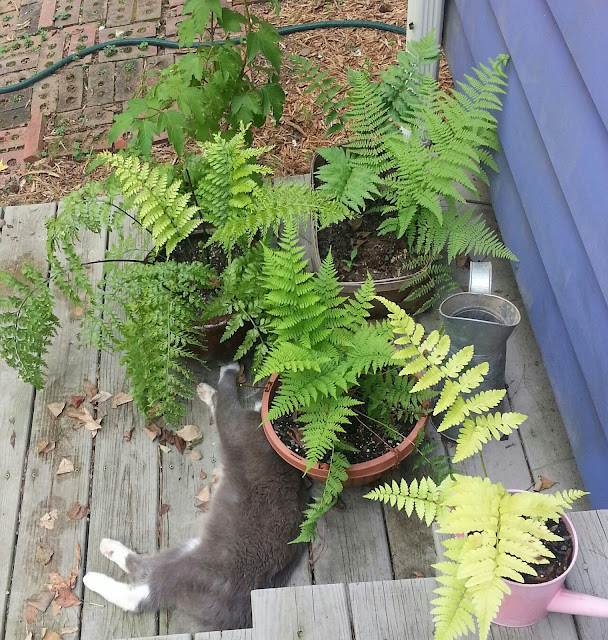 |
| 96 degrees in the shade at 5pm today. Gus is hanging out under the ferns. |
How did I get so much done today? Remember this, sister, when you wail about the days when nothing seems to get done. Nothing is wasted. Remember that, too.
I have a really crummy, really awful, really unsellable draft of a story about Rachel Carson. I've been writing this book since 1999. I've had probably 20 drafts over the years, and maybe a dozen of them survive. Okay, a half-dozen.
If I truly believe that I'm writing even when everything is percolating, then I've been trying to get at this latest draft for about 16 years. I do believe that. Sometimes it takes TIME. And things change. You change. How you see the story changes. How picture books are written and sold changes. Editors move or age up or down or out or in -- whatever. There are so many variables. Yes?
Whatever the case, this morning I sat down and wrote from beginning to end, all of it, all over again. The story is so much a part of me by now, I knew my direction. And, after spending so much time with 4-year-old Abigail, reading so many books, and getting to know her sensibilities so very well, the way I approach a picture book reader/listener is different.
So my rhythm and tone and plot and language -- everything is different about this very same story.
At lunchtime, I read what I had to Jim, and I heard how clunky and awful it is. How many holes there are. (I actually write "DETAIL HERE" or "BLAH BLAH BLAH.") But I am just ebullient! I have a draft! A draft! I can do something with that. (Or not... I have a bunch more of these where that one came from... ha.)
I prefaced my reading by telling Jim about Rachel Carson -- setting up this particular scene/story. I felt my heart swell with such deep admiration for her, as I spoke... a sure sign that I am in the right place... you know? Write what you are passionate about, that's what I say. That's the only thing that works for me. And so... we will see.
I ordered my office a little. It's a warehouse right now. It's chock-full of all the traveling I've done since January, and that's a lot of travel. It's home to all the detritus of living out of my suitcase for six months, plus library hauls and bills to be paid and kid stuff and a dehydrator and honestly, I don't know how I do it. I plan to tackle it, a half-hour at a time this summer. It will take a while.
The rest of the day was full of watering and weed pulling and consulting with our water-management-yard-putter-back-togetherer Roger, ordering and taking possession of 13 cu. yds of hardwood mulch for the beds that are ready for it. It's so hot.
I got a shower outside. Now I'm sitting in the pink chair with my hair in a towel, drinking the last of the sweet tea (Ruby Lavender would be proud of me), and reading LEROY NINKER SADDLES UP by Kate DiCamillo. Abby and I loved MERCY WATSON so much, and this is where Mercy led me.
Dinner out with friends. Thank goodness. I'm letting that draft cool. It needs so much work. Maybe tomorrow. Maybe.
YOU?


By: James Preller,
on 5/19/2015
Blog:
James Preller's Blog
(
Login to Add to MyJacketFlap)
JacketFlap tags:
the writing process,
James Preller,
Scary Tales,
Preller writing process,
Iacopo Bruno,
Scary Tales series,
Best scary stories for children,
I scream you scream,
Nightmareland,
Swamp Monster,
Dismal Swamp,
inspired by Twilight Zone,
Scary Tales Swamp Monster,
Summer Reading for Kids Who Love Scary Stories,
The art of Iacopo Bruno,
The Dirge Chemical Plant,
Add a tag
Once in a while I try to provide content on this blog that has some, cough-cough, insight into my writing process. So I thought I’d gather up some images and talk about the making of my upcoming book in the “Scary Tales” series, Swamp Monster (Macmillan, July 7, 2015).

Curiously, any description of “how” a book is written is as much “story” as the book itself. And by that I mean, of dubious veracity. Who can accurately recount where ideas come from? And in what order? Like writing the book itself, any description of origins mostly feels like I’m making it up as I go along.
But anyway!
Swamp Monster is the 6th book in the series. Each story is different, a new setting with new characters, yet each one promises a “Scary Tales” experience. What attracted me to this over-arching structure, inspired by the old “Twilight Zone” TV series, was the width of possibility. The stories could be quite different, not at all narrow or typical. After writing a few that were quite conceptual — I Scream, You Scream and Nightmareland, in particular — I settled on simpler, more traditional thrills in the most recent stories: The One-Eyed Doll and Swamp Monster.
That is, I began by thinking about the scary thing.
Somehow the idea of a Swamp Monster appealed to me. In no small part because of the setting. A swamp! As I was largely unfamiliar with swamp life in particular, I had to do some research. I read about the fauna and flora of typical swamps, and soon settled in my mind that this story could take place somewhere in Southeast Texas. I found and saved random images that fed my imagination, such as these:






Okay, so that felt pretty creepy to me. To up the ick factor, and to help explain the mutant monster, I opted for the toxic swamp gambit. The book begins:
The Dirge Chemical Plant had been dumping toxic sludge into the swamp for the past twenty-five years.
A few paragraphs down:
DRIP, DROP, SLURK. It leaked into the streams and waterways, into ponds and lakes. Poison soaked into the ground.
What about the creatures of that environment? The fish and birds and snakes and gators? The animals that drank the water daily? That swam amidst the burbling toxins? Well, most died off. But some adapted. Mutated. Learned how to feed off the toxic waste. Those creatures grew stronger, bigger, tougher.
More dangerous, too.
The pollution was the worst out on the Dead River, which ebbed into Dismal Swamp like a last, dying gasp. Hardly anybody lived out there. Nobody important. Some poor folks, mostly. And that’s where our story begins — with two boys, Lance and Chance LaRue. On this day, they were knee-deep in the foul, nasty water, swiping at mosquitoes, searching for frogs.
That was their first mistake.
Before the plot kicks into full gear, I introduce readers to the twins. Describe them and swiftly set them on the path to danger.
Character meets Setting:
The muddy path skirted the edge of the swampy water. Fortified by peanut butter sandwiches — no jelly to be found at home — the boys felt strong and adventurous. They went deeper into the woods than usual. The trees thickened around them, with names like black willow and water hickory. Long limbs hung low. Spanish moss dangled from the branches like exotic drapes. Snakes slithered. Water rats lay still and watched though small, red eyes. Once in a while, a bird called. Not a song so much as a warning.
STAY AWAY, GAWK, STAY AWAY!
My original idea was basic. I was particularly intent for this story to create a strong plot-line running through the book. A direct plot like an engine on a track, no meanderings. So the boys find an egg and bring it home. Plot begins in earnest. I soon realized that the egg would not be enough. Sure, it would hatch and Lance and Chance would discover that they were soon proud parents of a little monster.

But where was the horror in that?
Darkness filled the room. It felt like a presence, a living thing that came to spend the night, watchful in a corner, waiting. Lance breathed in the dark. It filled his lungs, entered his stomach. He closed his eyes and the darkness waited. He opened them and it seemed to smile. The invisible night’s sharp teeth. Lance breathed out. He disliked the long nights when the sounds of Dismal Swamp played like an eerie orchestra in the air. Frogs croaking, bugs buzzing . . . and the sudden, startled cry of a rodent killed by some winged creature in the night.
That night, the boys are awakened to sound of tap-tap-tapping on the egg. The watch in awe as the creature hatches.
“That ain’t no turtle,” Chance said.
“Nope,” Lance agreed. “Look at those claws, those teeth. I’ve never seen nothing like it before. What do you think it is, Chance?”
“I sure don’t know,” the oldest boy replied. “But I’ll tell you what. I don’t ever want to meet the chicken that laid that egg.”
At that moment, the newborn raised itself to full height, about six inches. With an angry hiss, the creature opened its mouth wide like a boa. A blood-red neck frill rattled open. SPLAT, SPLATTER! The creature spat black gobs of goo against the side of the pail.
“Whoa, it’s a monster,” Lance whispered in a soft, appreciative voice. “Our very own swamp monster.”
And with those words, the two boys stared at each other . . . and high-fived.
At this point, I introduce a new character to thicken the broth, and we meet the spectacular Rosalee Serena Ruiz.
If someone had to discover their secret, Rosalee was the best person for it. She could spit farther, burp louder, run faster, and snap thick branches across her knee. Rosalee was a girl all right, but the boys didn’t mind. In fact, they barely noticed.
I had decided by this point, actually before this point, that my little monster was not enough. Cool, but not quite terrifying.

I needed something more. An angry mother. So Rosalee prods the boys back into the deep swamp — she wants an egg of her own — and that’s how the mother catches their scent. She hides in the water.
To my surprise, I wrote scenes from her perspective.
With a subtle movement, she glides through the black water like a hawk riding the currents of the wind.
A thought troubled her mind.
Others were out there . . . Others had come to her home, her alone-place. she had sensed them, smelled them.
So she hid, as she always did.
She moved in the safe dark, the cool dark, and she grieved again for the egg that was gone. The child she never knew. That was her loss. And then, slowly, painfully — like a cloud that gathers itself in the story sky — a new question formed in her skull.
Was the egg stolen?
Had it been taken . . . by the Others?
Those faces in the woods?
She had glimpsed them.
Their ugly, round eyes.
Their skin like smooth stones.
Little monsters.
New feelings began to stir inside the heart of the swamp creature.
Feelings of anger, of rage and revenge.
Her eyes opened, yellow in the black water.
Squilch, squilch, squilch.
Under cover of darkness, she follows them home.
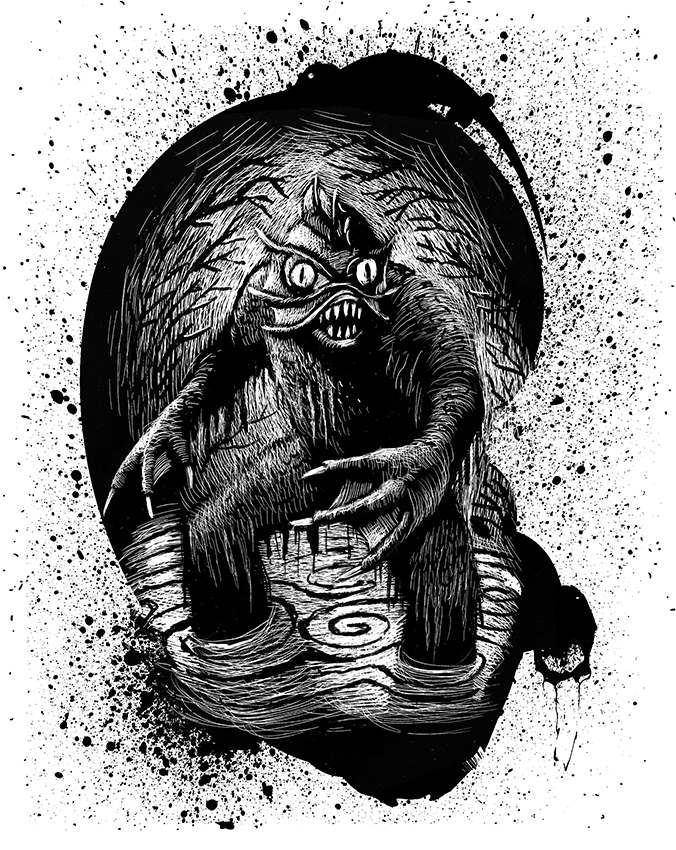
An image came to me. The monster, wet and awkward on land, arriving at the LaRue’s house on the edge of Dismal Swamp.
Of the door opening, of her entering.
“Upstairs, quick!” Chance ordered. He grabbed the knife off the table.
The boys bounded up the stairs in threes. By the time they reached the landing — BOOM! CRUNCH! — the front door flew open, knocked off its hinges.
The swamp monster stepped into the house.
I can’t give away any more story here. You’ll have to read the book to find out the rest.
Illustrations by Iacopo Bruno, taken from the book SCARY TALES: SWAMP MONSTER, due in stores on July 7th.
-
I recently received a note from a friend. She wrote: “The topic of our local authors’ & illustrators’ meeting is ‘rejection.’ Would you mind sharing an anecdote about either a rejection or an acceptance that I can share with our group? Hearing about these from you will mean a great deal to our members.”
A few days later I banged out the response below.
-

I wish I had something remotely wise to offer you on this topic, some helpful insight that would give you the strength and wisdom to move forward in the face of a cruel, indifferent world.
I assume you already know all the stories. The books that were rejected 37 times only to become classics of children’s literature. The writers who wall-papered their offices with rejection slips. The realities of the business, how sometimes books are rejected simply because they don’t fit into a publisher’s overall plan — not the fault of the writer or even of the book itself.
And also, as I’m sure you know, there are things to be learned from rejection. For a long time early in my career, I hoped for “quality rejections.” Often a good rejection — anything beyond a standard form letter — can become the beginning of a relationship between writer and editor. And I guess it’s also true for standard rejections too. Proof of your hard work, your determination, your persistence. You are a writer sending out manuscripts and receiving replies from publishing companies. That places you inside the process, whether you are happy with the result or not.
Hey, folks, while we’re at it: Let’s hear it for persistence!
=

-
I am saying to you: Rejection is awful. It’s heartbreaking. I first published in 1986, almost 30 years ago, and I still experience professional rejection in many different ways. Just a scroll through my daily feed on Facebook and I’m ready to start drinking. The awards I didn’t win, the amazing books I didn’t write, the terrific ideas I never had, the wonderful schools I’m not asked to visit, the ALA this and the mid-winter that and on and on and on. The world, it seems, is always telling us that we aren’t good enough. I’ve wanted to give up many times, just wave the white flag: I surrender.
That’s when you have to get back to basics. Get back to story. Back to the core of creativity. Read some books. Fill your heart, your mind. Sit back, close your eyes, rest, and imagine.
And write.
Something new, something better.
The world of publishing — of “being” an author — is filled with distractions. The business of it, the tweets and status updates, the self-promotion and networking. Most of it is utter bs. Because none of it is about writing, making things, being a true artist.
You have to keep returning to the purity of words, the insistence of language, the value of story. You have to be a writer. And if you are, if that thing is alive inside you, no amount of outside rejection can ever put out that flame.
Burn brightly, keep creating. And if in the end you never get published, if the world does not fall at your feet, so be it. That’s life. You will have done real work, you will have done your best. I truly believe there’s value in it, personal growth, something. Just to participate in the creative process, to be alive in it, to enter the dance.
It just may feed your soul.
So it’s not really about the world accepting or rejecting you. All of that is beyond your control. It’s about you . . . accepting the world, holding it your heart, and putting forth your best words, thoughts, and feelings onto the page. That, to me, is a triumph.
Congratulations. Now, keep going, and good luck.
-
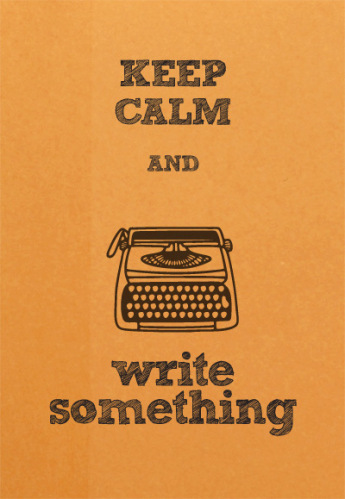
-
For someone who has such difficulties with the English language, it’s something of a shock for me to realize how many of my books have been translated into different languages.
Yesterday I got two new ones in the mail: Jigsaw Jones in Arabic and Scary Tales in Indonesian. I always discover these translations in a haphazard way. They just come in the mail or, in many instances, never come at all. I gather that the Arabic translations of Jigsaw have existed for years. Who knew? Not me. They keep us writers in the dark; like mushrooms, we prefer damp, dank places.
Today I warmed up the trusty, rusty scanner to share a random few translations with you. I have others in French, Italian, Portuguese, and more, but nevermind that. Look here . . .
-

Arabic versions of The Case of the Race Against Time and The Case of the Golden Key.
-
Here’s a sample page . . .

Cool, right? Here’s Geetha, the class artist, showing Mila and Jigsaw an artist’s rendering of the suspect. Illustration by Jamie Smith.
-
In German, Jigsaw Jones was entirely re-illustrated and translated into “Puzzle Paul.”

Jigsaw Jones — I mean, Puzzle Paul –searches for a valuable coin in the German translation of The Case of the Christmas Snowman.
-
Here’s the back cover of one of my Scary Tales titles, newly translated into Indonesian.

-
They love baseball in Korea too:

Six Innings, the Korean translation.
-
Let’s see, how about an interior from the Spanish translation of Hiccups for Elephant?

Poor Mouse was trying to sleep. Illustration by Hans Wilhelm.
-
I’ll stop here with this one, a favorite, the Greek translation of Bystander. Isn’t it amazing? Aren’t I lucky? Doesn’t it just blow your mind to think about it, writing books that are read all over the world?

 -
-
I love this illustration by Jamie Smith from one of the Jigsaw Jones books. I mean, the glove looks like it might have been drawn by an Englishman, which it was, but the spirit is right. I am very grateful that Jamie illustrated so many books in the series; he was, I think, exactly right.
And, yes, I’m glad to see my love of baseball creep into another book.
-

-
On school visits, readers often as if I am a particular character.
Am I Eric in Bystander? Jude in Before You Go? Am I the great detective Jigsaw Jones? Or the mouse in Wake Me In Spring?
(Okay, no one has ever asked that last question. And the answer is: no, I am not the mouse in Wake Me In Spring! Yes, we both have beady little eyes and whiskers, but beyond that the similarities are purely accidental.)
Back to the Jigsaw question. No, I’m not Jigsaw Jones. It’s rare for any character to fully stand in for the author. But, of course, there are elements of my life and personality — most definitely exhibited in Jigsaw’s sense of humor — in that character. And there are trappings of my childhood in his world.
Like me, Jigsaw is the youngest in the family. Like me at that age, Jigsaw’s grandmother lives with him. And like me, the boy loves baseball.
It was easier to write that way, more natural; I intimately knew those feelings.
But as I’ve grown as a writer, especially from my early days in college, I’ve learned how to distance myself from my characters. The writing, in my case, has become less autobiographical and more fully its own creation. The characters seem to stand and move around on their own two feet, acting according to their own (fictional) inner compasses. I don’t ask what I would do; I ask what they might do. At the same time, parts of my life, my world, leak into everything. How can it be any other way?

Art by Jeffrey Scherer.
Anyway, I didn’t expect to write this muddled post today. I mostly wanted to share my excitement about the coming baseball season. I am coaching again this year, a really nice group of 15-year-old boys. We’ll play a travel season and enter some tournaments. My 10th-grade son, Gavin, will be playing JV baseball. It’s an impressive accomplishment; not so easy to make those teams in our town. And last but not least, my heart is filled with hope about my beloved New York Mets.
Dare I say it? I think they might actually be good this year.
I often sign copies of Six Innings the same way. “Dream big, and swing for the fences!”
Is there any other way to play?

By: James Preller,
on 3/27/2015
Blog:
James Preller's Blog
(
Login to Add to MyJacketFlap)
JacketFlap tags:
the writing process,
Neil Gaiman,
Madeleine L'Engle,
James Preller,
Preller writing process,
Scary Tales series,
James Preller Scary tales,
disturb the universe,
Fear is a wonderful thing in small doses.,
Horror books for kids,
Please Disturb,
Responsibility of the children's writer,
Add a tag
-
“The writer whose words are going to be read by children
has a heavy responsibility. And yet, despite the undeniable fact
that the children’s minds are tender, they are also far more tough
than many people realize, and they have an openness
and an ability to grapple with difficult concepts
which many adults have lost.”
– Madeleine L’Engle
Over the past couple of years, I’ve come to appreciate the importance of disturbing readers.
Shaking them up.
In fact, I believe that many readers, consciously or unconsciously, crave the experience.
When I think about personal growth — perhaps in viewing my own three children — I imagine that it can be characterized by periods of equilibrium, followed by passages of disequilibrium, followed (hopefully) by a new, higher level of equilibrium.
Comfort, discomfort, growth.

I came to understand some of this through my experience writing my first “horror” series, Scary Tales, for young readers. I placed horror in quotes because, well, it’s not that scary; nobody gets hurt, everything turns out okay in the end. Every time. But, sure, there are some clammy palpitations along the way.
I often visit schools and the response to “scary” in grades 3-5, particularly, is wildly enthusiastic. Kids love this creepy stuff with its twisting plots, and they have long before I ever entered the scene. But I’ve also learned that there is a lot of fear out there — from adults. The redoubtable gatekeepers. A question I’ll hear at Book Festivals: “Will this book give my child nightmares?”
Of course, I don’t know the answer to that. How should I respond?
 Okay, I’m a parent. I get it, mostly. We don’t want our kids to wake up screaming, scared out of their minds. And to that end, we don’t want to irresponsibly expose them to content that might be developmentally inappropriate. Well, a caveat there: Most people have no problem, bizarrely, with “inappropriate” content if it’s on TV or a movie. Even something as cherished as the Harry Potter books and movies — where characters are murdered, and the stories get continually darker as agents of pure evil plot death and destruction. Everybody is fine with that! But a story about a kid trapped in a cave with bats? Or unfriendly snowmen guarding a castle? Or a swamp monster?
Okay, I’m a parent. I get it, mostly. We don’t want our kids to wake up screaming, scared out of their minds. And to that end, we don’t want to irresponsibly expose them to content that might be developmentally inappropriate. Well, a caveat there: Most people have no problem, bizarrely, with “inappropriate” content if it’s on TV or a movie. Even something as cherished as the Harry Potter books and movies — where characters are murdered, and the stories get continually darker as agents of pure evil plot death and destruction. Everybody is fine with that! But a story about a kid trapped in a cave with bats? Or unfriendly snowmen guarding a castle? Or a swamp monster?
Those things might prove . . . upsetting.
And here’s the thing: Maybe we like scary stories exactly because of that disturbance. On some deep level, maybe even unconsciously, we want to be disturbed. Because we know that it is necessary to our growth.
What does the reader learn, after losing her balance, when she discovers, Whew, I’m actually okay. I survived this.
Might there be value in that discovery?
I recently got a letter from an 8th-grade reader who was disturbed by a scene in my middle-grade novel, Bystander, where a boy, Eric, gets beaten up. It upset his sense of fairness. In the letter-writer’s mind, “Eric was being very friendly,” and he “didn’t deserve to get beat up.”
The scene bothered this reader. It shook him up a little. A part of him preferred that it didn’t exist at all.
And I think, well, good. It was supposed to do that. It was designed to make you feel something. These are the troubling scenes we remember our entire lives.

Speaking of scary, how about the Teletubbies in black and white?
-
Now I’m not talking about pure shock, artlessly rendered. The head lopped off and bouncing, boing-boing-boing, down the carpeted staircase. Though, I guess, that might have value too. I’m talking about the fiendish clown in Stephen King’s It. Or the heartbreaking moment of when Travis is forced to shoot his rabid dog in Old Yeller. The moments that give us dis-ease.
I think that’s one of the things that good books can do for us. They disturb our tranquility a little bit. Which is also why, an aside, this entire notion of eliminating “trigger books” in the college curriculum is so misguided. The notion is that some people might be upset if they encounter certain kinds of things, or triggers, in assigned books: a mother with cancer, a rape, social prejudice, world hunger, whatever their personal trigger might be. Some believe that students should be warned about these triggers, in the hope of avoiding them.
We wouldn’t want anyone to be upset.
And I think: Good luck with that.
And also: Isn’t that kind of the point?

Illustration by Iacopo Bruno, from Scary Tales: One-eyed Doll.
When I’m not writing Scary Tales, which is most of the time, I tend to write realistic fiction. My books have included childhood cancer, fistfights, bullying, suicide, lost pets, and car accidents. Scary stuff, life.
A book, of course, is a safe way for a child or adult to address different fears. A book can be mastered. A book can be closed. It can, simply, not be read at all. Or put aside to be read another day when the reader feels prepared. And then, on that day, guess what? The reader miraculously survives. Calm is restored.
-
-
-
-
“Fear is a wonderful thing, in small doses. You ride the ghost train into the darkness, knowing that eventually the doors will open and you will step out into the daylight once again. It’s always reassuring to know that you’re still here, still safe. That nothing strange has happened, not really. It’s good to be a child again, for a little while, and to fear — not governments, not regulations, not infidelities or accountants or distant wars, but ghosts and such things that don’t exist, and even if they do, can do nothing to hurt us.”
– Neil Gaiman
I get asked for writing advice from time to time. And every once in a great while I try to tackle it sincerely — here, and here, and here, and here, for a quartet of random samples. If you are really interested in my collected blather on the topic, just use the nifty “SEARCH” function to this blog and type in “writing advice” or “writing tips” or “aardvarks in bathing suits” and swim through the murky wisdom. Under “CATEGORIES” in the right sidebar there’s one titled “the writing process” which loosely gathers that kind of material too.
But for today, we’ll let this suffice. Carry on!
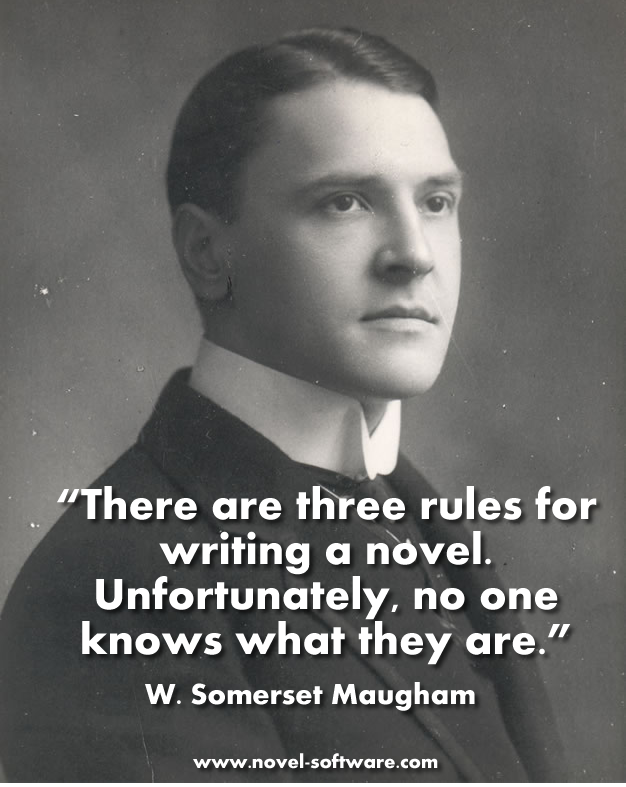
The words came today. Lots and lots of words. It wasn't the story that I had been working on, that I wanted to write. It wasn't part of a client project either. Still, when the words are begging me to write them, I'm not going to argue :)
I wish I had a good quality camera to capture the charm of this room
There is a lot stuff happening in my home office- there's a PC, a laptop, printer,

By: James Preller,
on 12/26/2014
Blog:
James Preller's Blog
(
Login to Add to MyJacketFlap)
JacketFlap tags:
the writing process,
Readings,
Mary Oliver,
John Berryman,
James Preller,
W.S. Merwin,
Back to the Future,
Preller poetry,
"You can't you can never be sure",
a bride married to amazement,
A writer goes out of print,
Merwin Berryman,
Tell me what is it you plan to do with your one wild and precious life?,
When Death Comes Mary Oliver,
you die without knowing,
Add a tag
-
I’ve been reading more poetry lately, like returning to an old friend, and this morning want to share two things.

Poet John Berryman, who died without knowing.
First, from this morning, rereading a poem by W.S. Merwin titled “Berryman.” I’ll give you the last seven lines, you can look up the rest:
-
I asked how can you ever be sure
that what you write is really
any good at all and he said you can’t
-
you can’t you can never be sure
you die without knowing
whether anything you wrote was any good
if you have to be sure don’t write
-
As for me, I hear those words and accept them in my heart as true. Self-doubt seems central to the experience, though it’s nearly impossible to write without wild spasms of self-confidence. It’s why some writers drink, I’m sure, to trick yourself into feeling that way.
You die without knowing, that line, transcends the subject of writing. We can’t ever be sure, but we persist, and we can at times, in fact, think so. We may say, quietly, in bed to our loved one, “I think it’s a good book.” And we might even believe it. But in the next moment, in the silence between our last word and her reply, we can also know that our life has a been a delusion, a failure, and that none of it amounts to much of anything at all, when we had hoped for so much more.
Ah, the writing life.
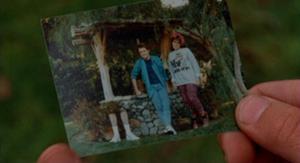 I’ve had so many books go out of print over the past two years. Just a staggering number, more than 40 books . . . going, going, gone. It’s the business I’m in, there are all sorts of rational reasons, excuses, palliatives I can apply. But still, it cuts deep. It just does. It feels like that photograph in the movie “Back to the Future.” Marty keeps looking at it, panicked, watching the images slowly disappear.
I’ve had so many books go out of print over the past two years. Just a staggering number, more than 40 books . . . going, going, gone. It’s the business I’m in, there are all sorts of rational reasons, excuses, palliatives I can apply. But still, it cuts deep. It just does. It feels like that photograph in the movie “Back to the Future.” Marty keeps looking at it, panicked, watching the images slowly disappear.
Maybe that’s what alzheimer’s feels like during brief snatches of clarity. You are helplessly aware that it’s all slipping away, and you can’t even be sure that any of it was real.
If you have to be sure don’t write, Berryman tells us, through Merwin. Such is life. You can’t you can never be sure. What can you do? You write some more, and hopefully it will be good.
Two nights ago I stood up at the head of the table — we were hosting friends and family on Christmas Eve, just a lovely evening — and I said a few words in preamble to a poem I wanted to share, Mary Oliver’s “When Death Comes.”
Which is funny, right? The title got a chuckle. Typical Jimmy, to go dark at a time like this. But the truth about darkness is that it gives us an appreciation of light. Poems purportedly “about” death are really about life. At least, that’s certainly the case here. “I want to say all my life/I was a bride married to amazement.”
I hope you like it.
When Death Comes
When death comes
like the hungry bear in autumn;
when death comes and takes all the bright coins from his purse
to buy me, and snaps the purse shut;
when death comes
like the measle-pox
when death comes
like an iceberg between the shoulder blades,
I want to step through the door full of curiosity, wondering:
what is it going to be like, that cottage of darkness?
And therefore I look upon everything
as a brotherhood and a sisterhood,
and I look upon time as no more than an idea,
and I consider eternity as another possibility,
and I think of each life as a flower, as common
as a field daisy, and as singular,
and each name a comfortable music in the mouth,
tending, as all music does, toward silence,
and each body a lion of courage, and something
precious to the earth.
When it’s over, I want to say all my life
I was a bride married to amazement.
I was the bridegroom, taking the world into my arms.
When it’s over, I don’t want to wonder
if I have made of my life something particular, and real.
I don’t want to find myself sighing and frightened,
or full of argument.
I don’t want to end up simply having visited this world.
–Mary Oliver
-
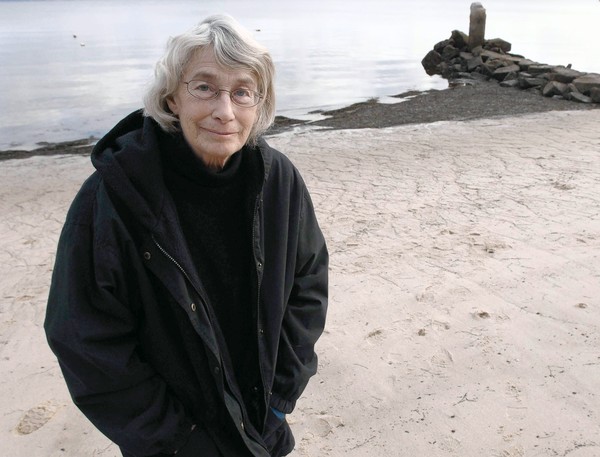
Mary Oliver: “Tell me, what is it you plan to do with your one wild and precious life?”

By: James Preller,
on 11/24/2014
Blog:
James Preller's Blog
(
Login to Add to MyJacketFlap)
JacketFlap tags:
New books James Preller,
the writing process,
Fan Mail,
James Preller,
Preller Six Innings,
James Preller Bystander,
preller writing advice,
Advice for Young Writers,
Fan Mail Wednesday Preller,
Add a tag

Here’s a letter that did not have to travel very far. However, it’s a little tough to read, but I’m sharing it anyway. So there:

I replied:
Tyler,
Wow, thanks for the letter and thanks, too, for reading so many of my books. You inspire me to write more. Here are three titles that are coming out in the near and distant future: Scary Tales: Swamp Monster (Spring, 2015), The Fall (Fall, 2015), and Dead, But Cautiously Optimistic (Spring, 2016).
 I hope that by now you’ve been able to track down a copy of Bystander. Usually I describe that book as best for grades 5-up, but I’d never stand in the way of a motivated reader. I have a deep affection for Six Innings, and I’m proud that it was named an ALA Notable Book. I poured a lifetime of baseball obsession into that single book, while also writing about my own son’s struggle with a serious illness.
I hope that by now you’ve been able to track down a copy of Bystander. Usually I describe that book as best for grades 5-up, but I’d never stand in the way of a motivated reader. I have a deep affection for Six Innings, and I’m proud that it was named an ALA Notable Book. I poured a lifetime of baseball obsession into that single book, while also writing about my own son’s struggle with a serious illness.
I have to confess that I always feel a shiver of uneasiness when asked about writing advice. I know many authors who give it confidently and freely. In my case, despite all these books, I still feel like I’m someone who should be taking advice rather than giving it.
But, okay, fair enough: I must know something. Right? So read, read often and read widely. Read for pleasure, yes, but also read like a writer. By that I mean, pay attention to what’s happening on the page. Be aware that there’s a real person, an author, behind those scenes on the page, making choices with every word, every sentence. If you are excited, or scared, and laughing out loud — if you feel anything at all while you read — go back and try to figure out what the writer did to cause you to feel that way. We learn best by reading other writers.
Also, of course, you’ve got to write. And by that I mean, write anything at all — notes, poems, song lyrics, snippets of dialogue, true stories, anything at all. Purchasing your own blank journal. I love those ordinary composition notebooks you can find at CVS. It’s so important to have a place you can go with your thoughts. Remember that it’s impossible to write without deep thought. Writing is an act of concentration and focus. You’ll need to give yourself the greatest gift of all: time to think. Space to feel. It requires that you turn off the television, shut down the computer, put away the phone and games. Hey, I love all that stuff, but in order to write, you must go inside your own skull for entertainment.
At your age, I think it’s best to concentrate on short pieces. Little stories. Scenes. It’s very common for young writers to imagine a great, long, complicated story that would require a 100,00 words to tell properly. Problem is, 99% of the time those ambitious stories are never completed.
 I believe there’s value in finished work, and sometimes that’s a matter of adjusting your goals. Imagine that you were beginning to learn carpentry. You’d need to familiarize yourself with the tools of the trade. A hammer, some nails, a screwdriver, scraps of wood, a monkey wrench, etc. You’d begin, I’d hope, by attempting to build something relatively simple: a birdhouse, perhaps. You wouldn’t attempt a structure that was, say, a 2,000 square-foot log cabin for a family of five. Same thing with writing. Explore the tools. Play around with them. Write a scene with a heavy use of dialogue. Put together characters on a park bench, get them talking about something, anyway.
I believe there’s value in finished work, and sometimes that’s a matter of adjusting your goals. Imagine that you were beginning to learn carpentry. You’d need to familiarize yourself with the tools of the trade. A hammer, some nails, a screwdriver, scraps of wood, a monkey wrench, etc. You’d begin, I’d hope, by attempting to build something relatively simple: a birdhouse, perhaps. You wouldn’t attempt a structure that was, say, a 2,000 square-foot log cabin for a family of five. Same thing with writing. Explore the tools. Play around with them. Write a scene with a heavy use of dialogue. Put together characters on a park bench, get them talking about something, anyway.
Also: slow down. That’s one I have to keep learning in my own writing, over and over again. Don’t be in a hurry to get to the next scene, and the next, and the next. Instead, take your time with the scene you are writing. Go deeper, think harder. Find the details that are worth sharing. Decelerate.
Anyway, Tyler. Do you see what I mean? It’s so hard for me to say anything that’s truly helpful. I wish I could give you the magic key, but I can’t. In the end, writing is all about you and the blank page. No one can really help all that much. I wish you the best of luck in your writing life. If somebody like me can do it, I’m sure that you can, too.
My best,
JP
One of the toughest things I've tried to articulate to my non-writer friends about the writing process is the craft required to ensure that a children's story meets editorial guidelines.
Or maybe they just don't get it because it doesn't sound very creative.. it sounds like a trade... maybe like laying the story out brick by brick, or panelbeating what's already there? LOL!
I think the "

By: James Preller,
on 10/13/2014
Blog:
James Preller's Blog
(
Login to Add to MyJacketFlap)
JacketFlap tags:
the writing process,
James Preller,
Donalyn Miller,
Scary Tales,
In the Classroom,
Colby Sharp,
preller writing advice,
The Nerdy Book Club,
Scary Tales series,
Best scary stories for children,
Zombies in the classroom,
Best scary books for young readers,
Best scary stories kids,
Tips for student writing,
Writing about zombies,
Add a tag
 Note: A variation of this essay first appeared a while ago over at the fabulous Nerdy Book Club, founded by Donalyn “The Book Whisperer” Donalyn, Colby Sharp, and possibly some other folks. It’s not entirely clear to me. Nonetheless! You can follow all their nerdy, book-loving, classroom-centered hijinks on Facebook, Twitter, and various other places.
Note: A variation of this essay first appeared a while ago over at the fabulous Nerdy Book Club, founded by Donalyn “The Book Whisperer” Donalyn, Colby Sharp, and possibly some other folks. It’s not entirely clear to me. Nonetheless! You can follow all their nerdy, book-loving, classroom-centered hijinks on Facebook, Twitter, and various other places.
These days, young people are crazy about zombies. That’s just a plain fact. Not every kid, of course, but a lot of them.
And I’m here to say: Use that as an advantage in your classroom. Seize the day zombie! Particularly when it comes to student writing. Some girls wants to team up to write a story about a zombie apocalypse? Here’s a pen and paper. Go for it, ladies.

Many students, as young as third grade and on up into high school, are watching THE WALKING DEAD. The secret that quite of few of them don’t realize is that the television show is not about zombies at all. It’s about people surviving zombies. The zombies themselves are boring, without personality, almost irrelevant. They could be switched out for deadly fog, or World War II, a forest fire, or a tsunami. The zombies are simply a device to propel a character-driven story forward. It’s the ticking bomb that drives plot forward and gives each moment heightening meaning.
That’s my essential point here. The action -– the story – is almost entirely about character.
 What we need to recognize is that, counter-intuitively, the zombie plot device perfectly lends itself to purely character-driven story. It could even be argued that it’s about family, blended, modern, or traditional.
What we need to recognize is that, counter-intuitively, the zombie plot device perfectly lends itself to purely character-driven story. It could even be argued that it’s about family, blended, modern, or traditional.
With, okay, some (really) gross parts thrown in. Warning: Some characters in this story may be eaten. Ha! And why not, if that’s what it takes? If a little bit of the old blood and guts is the hook you need to lure in those writers, embrace it.
You can’t write a good zombie story without creating an assortment of interesting characters. Then you place those diverse characters in danger, you bring them into conflict with each other, you get them screaming, and talking, and caring about each other.
As, okay, they are chased by a bunch of zombies.
There’s no drama unless the writer makes us care about his or her characters. Your student writers will be challenged to make those characters come alive, be vivid and real. We have to care that they live or, perhaps, really kind of hope they get eaten alive in the most hideous way possible by a crazed zombie mob.
Don’t be turned off by that. Remember, it’s really all about character development, turn your focus to that. Dear teacher, I am saying this: embrace your inner zombie –- and turn those students loose.
What they will be writing will be no different than your typical Jane Austin novel. Except for, you know, all those bloody entrails.
——
There are currently five books available in my “Scary Tales” series.





Over the last couple of weeks, I’m pretty sure I have developed a few new grey hairs. My nails have been bitten down into messy, spiky shards and my heart has been beating a tiny bit faster whenever a new email pings into my inbox.
Why?
Because I’m suffering from a state that most authors will recognise: a classic case of ‘I Have Sent My New Book To My Editor And Will Be Hearing Back From Her Any Day Now-Itis’. Or IHSMNBTMEAWBHBFHADNI for short.
Interesting things happen during an outbreak of IHSMNBTMEAWBHBFHADNI. One of them is that you look around your study and realise that it doesn’t look much like a study.
You know on those cop dramas when the police suspect a criminal of hiding drugs or stolen goods or something and they go round to the criminal’s home and ransack the place? Drawers pulled out, clothes strewn around the room, photo frames knocked over, shelves upended, piles of paperwork strewn across the floor. Yeah, that’s kinda what your study looks like.
I once heard the wonderful poet and author Jackie Kay talk about writing a first draft. She described it as being similar to organising a huge dinner party – but without doing any cleaning up along the way. After the party, when everyone’s gone home, you look around the kitchen and don’t even know where to start.
 |
| NB This is a random picture downloaded from the internet, not actual Jackie Kay's kitchen after a dinner party. |
I think she nailed it.
My study is a scene of devastation, filled with long trails of things that I have been ignoring/avoiding/not noticing for weeks. In those last few days of the first draft, where I’m working flat out every daylight hour - and a few of the pre-dawn ones, too - I put on my blinkers as I enter my study, carve a very careful path along the narrow channel that is not filled with paperwork glaring expectantly at me, sit down in my chair and start tapping away, noticing only the screen in front of me. And the continually-replaced cup of tea by my side. Actually, if I’m honest, in those last few days, when I’m working into the evening, it’s just as likely to be a bottle of beer by my side.
And then there is that magical moment. With a tiny tear in the corner of your eye that you’re never quite sure if you should really have (I mean, crying at your own book – is that even allowed?) you type, ‘the end’. The euphoria doubles as you write an over-emotional (you’re on your second beer of the evening) email to your editor, attach your baby – aka the manuscript that has taken over the last eight months of your life – and hit ‘send’.
Obviously, you don’t do anything much for the rest of that day. A good friend and special writer-buddy of mine, Lee Weatherly, once told me that you have to have a bottle of champagne when you finish a draft of your book. It’s virtually the law. And I don’t like breaking the law. Champagne, beer, whatever. Bring it on. This moment has been nearly a year coming. It's time to celebrate!
So let’s skip to the next morning. You know you have a fortnight or so before you’ll hear back from your editor. Actually, on this occasion, we're on a really tight schedule so it's more like ten days. Either way, it's time to mop up the mess.
For at least the last month, you’ve told yourself that this is the point when you will attack the email inbox, fill in the forms, sign the contracts, send off the tax stuff, return those shoes you should never have bought. Maybe even, I dunno, clean the house? Ten whole days. Your life is going to be SO sorted by the time you hear back from your editor. You're practically going to be a Stepford Wife.
I love good intentions. Don’t you?
Here’s what I’ve spent the last ten days doing.
- Having lie ins.
- Letting the dog on the bed so she won’t nag me for walkies.
- Mooching around the house in my PJs vaguely thinking about getting the vacuum cleaner out. Ha! As if.
- Meeting up with friends for coffees in the morning. In the morning!
- Watching Dragon’s Den recordings with my lunch. With my lunch!!!
- Reading multiple copies of The Bookseller and Practical Photography which have been arriving and being ignored every week for the last three months.
- Wandering around the garden with my new macro lens, taking photos of spiders, wasps and flowers.
 |
| Plenty more where this came from. If you want to see them, just ask. |
- And yes, just to make sure I feel I’ve achieved something this week, replying to at least two thirds of the emails that have been patiently waiting for me whilst I was busy getting my half-girl half-mermaid heroine out of trouble.
And then, before you know it, it happens. The email. Ping. Fourteen pages of notes. Bam.
A very deep breath. And back in we dive.
Who wants to live in a tidy house with clothes all put away in drawers, receipts filed away in envelopes and email inboxes sparse and empty, anyway?
Not me, it seems. Someone pass me a beer. I’m going in.
The first book come out in July 2013, and #5 comes out October, 2014, and the manuscript for #6 has been written, edited, revised – now it’s up to Feiwel & Friends to turn my rough pages into a real book.
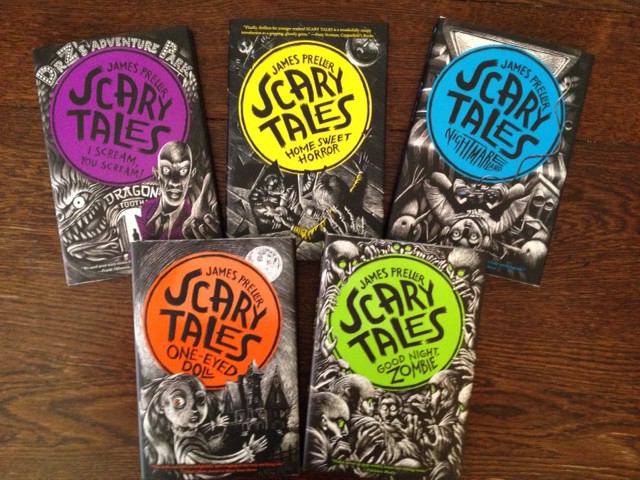
I’m proud of this accomplishment. Proud of the quality of these books. Six stories, each unique, with new (diverse) characters and varied settings. Each one designed to get kids turning the pages, reading books, heart beat faster, and enjoying the experience.
As an author, I’ve had to learn to control the things I can, and to accept the process. So much is out of my hands. Will these books find an audience? Will they get past the gatekeepers? Will readers love them? I can only hope . . . while I move on to write the next story that moves me.
Thank you for giving this series a chance. And thanks, too, to everyone at Macmillan for helping to make these books possible. I’ve been fortunate.
Oh, yeah: Great books for Halloween, or any time of year!
Thanks to Algonquin Books . . . and cartoonist Tom Gauld, who nails it.
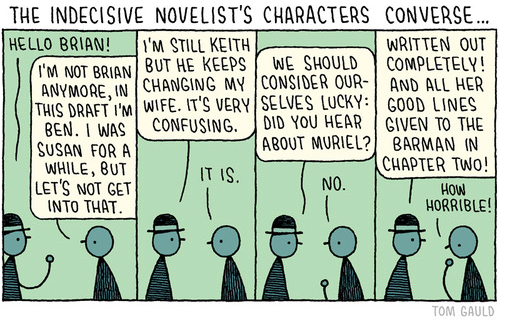

By: James Preller,
on 8/26/2014
Blog:
James Preller's Blog
(
Login to Add to MyJacketFlap)
JacketFlap tags:
Bystander,
Preller Bystander,
One-Eyed Doll,
Sequel to Bystander,
Best Books for Halloween,
From the author of BYSTANDER,
Liz Szabla editor,
Read Harder T-Shirt,
The Fall Preller,
the writing process,
James Preller,
Liz Szabla,
Scary Tales,
Add a tag
I got a big package in the mail yesterday . . .
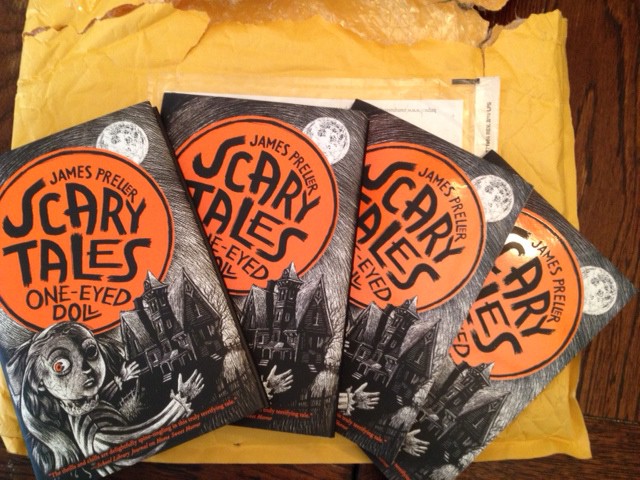
This bit, four real books, finally published, represents a final payoff. It’s done, it exists. There’s also something a little, I don’t know, deflating about it. An ending. Now it will go out into the world, probably to be largely ignored. That might sound a touch maudlin, or even self-pitying, and I’m sorry about that. But that’s the business these days. So many books don’t make it, even the good ones. It can be disheartening. And, yes, scary.
Hey, check out my new shirt . . .
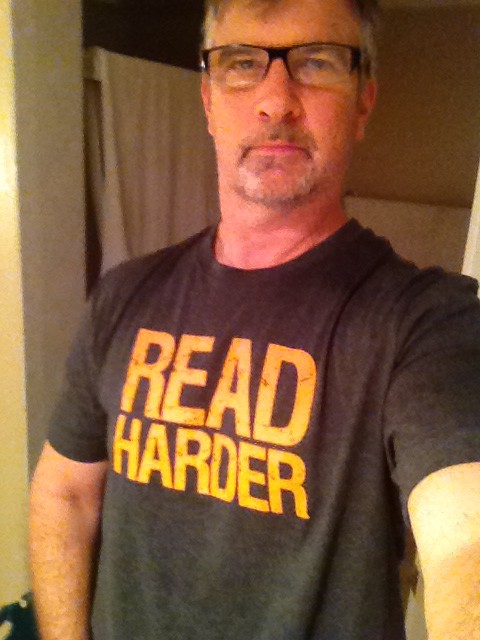
Cool, right? I love it.
And lastly, most exciting of all, came the editorial revisions for my upcoming book, THE FALL, a quasi-sequel to BYSTANDER. I try to enter the process of revisions with an open mind and an open heart. I trust my editor, Liz Szabla, and endeavor to deeply consider all of her comments, thoughts, suggestions. This is a new opportunity for me to try to make this book better than ever. That involves, sometimes, letting go of old ideas, favorite sentences. It means stepping back — to truly re/vise, to see again — and, well, take another whack at it.
In a moment, the sound you’ll hear will be that of a writer rolling up his sleeves.
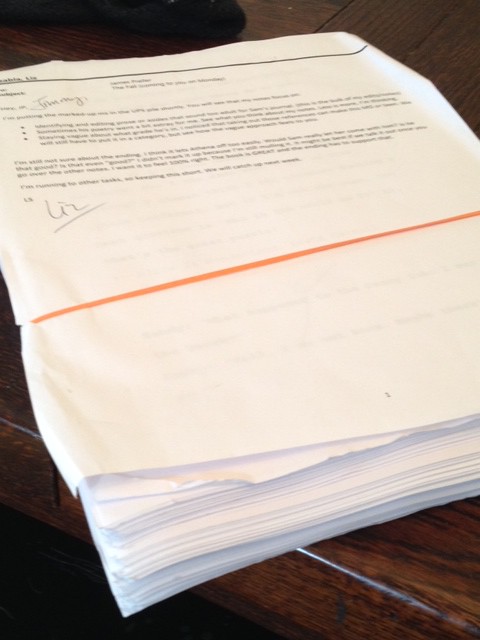
<!--[if gte mso 9]> Normal 0 false false false EN-US X-NONE X-NONE <![endif]-->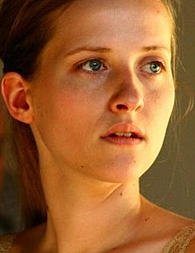 Recently, on the SCBWI Forum, a new children's writer posted her doubts about her ability to critique manuscripts. My agancy-mate and fellow author Parker Peevyhouse offered her wise advice, which spoke to me as a critiquer and a writer. So I invited her to expand on her thoughts for my blog.
Recently, on the SCBWI Forum, a new children's writer posted her doubts about her ability to critique manuscripts. My agancy-mate and fellow author Parker Peevyhouse offered her wise advice, which spoke to me as a critiquer and a writer. So I invited her to expand on her thoughts for my blog.
I hope it speaks to you.
3 Questions a Good Manuscript Critique Answers by Parker Peevyhouse
Manuscript critiques have been the greatest tool for improving my writing. But it’s not only getting a good critique that has helped me improve--I’ve learned just as much from giving critiques. Whether I’m giving or getting a critique, I’m thinking about story choices, and that kind of analysis hones my story-telling skills.
When I give a critique, I find myself focusing on three particular questions--questions that explore character, plot, and the intersection of the two:
1. Plot: Where do I feel like I can't make sense of what’s happening OR I don't believe what's happening would actually happen?
Sample comments I might write on a manuscript:
How did the dog get out of the yard if the gate was locked?
It’s hard for me to believe that a tree branch would break the fall of someone dropping from outer space.
2. Character: Where do I feel like I don't like (or am not interested in) the main character (or other characters)?
Sample comments I might write on a manuscript:
Darren complains about so many things--I’m starting to feel like he’s a whiner.
Why doesn’t Petunia speak up for herself when her sister blames her for spilling the milk?
3. Plot + Character: Where do I feel like the character doesn't actually have a reason to do what he/she is doing in the plot?
Why does the kid try to nab the thieves himself instead of calling the police?
So Winnie walks into the villain’s lair even though she knows he wants to steal her ruby wand?
Not only do these questions help me focus my critiques, but they also help me interpret comments I get on my own manuscripts. For example, a comment like “I can’t believe he won’t help his own best friend!” makes me think, My character is losing likeability here (#2). A comment like, “Why does she bother to figure out who created the virus?” makes me think, I need to strengthen this character’s motivation (#3).
I hope you find these critique questions helpful. If you want to hear more from me, you can follow me on Twitter @parkerpeevy or sign up for my occasional newsletter right here!
Parker Peevyhouse lives in the San Francisco Bay Area with her family, where she teaches part-time. Her debut YA science fiction novel, FUTURES, will be published by Kathy Dawson Books/Penguin in 2015.
One of my Top Ten Super Secret (so this one's no longer a secret) Writing Tips that I share with students is
DO NOT WRITE!
As in,
- Step Away from the Computer,
- Unplug
- Shoot Some Hoops
- Take a Shower
- Go For a Run
- Get a Massage
- Strike a Yoga Pose
- Meditate
- Go For a Walk
And I mean it.
I've learned to build this kind of time into my day. It's been proven to me again and again that my best ideas come when I'm away from the page. I keep my story with me. Inside my head. Dangling there like the carabiner hooked to my backpack. I let it dangle, and inevitably, ideas surface.
Two walks from the past two days yielded:
- Two universal truths
- Two endings
- Five funny lines
- One story arc
- One final scene
- A whole new character
- Three illustration ideas
Need more convincing?
Try it! For thirty minutes -
DO NOT WRITE.Have a great weekend!
Kudos and Thanks to my courageously-honest fellow TeachingAuthors JoAnn, Carmela and Laura - and to our TeachingAuthors readers as well - for sharing their understandable publishing and marketability concerns once they begin writing a story.
My filing cabinet too overflows with as-yet-sold manuscripts.
The adjective as-yet-sold speaks volumes about my optimism and Faith.
I’ve always believed that my Writer’s Story – and any story in which I’ve invested – would eventually bring that “inevitable yet surprising satisfactory resolution” required of all stories.
I truly am the Susan Lucci of Children’s Books.
I fortunately have what editor Ted Solotoroff once called endurability, as referenced in Dani Shapiro’s STILL WRITING: THE PERILS AND PLEASURES OF A CREATIVE LIFE.
I write stories that grab my heart and won’t let go. Period.
I write them one at a time, for however long it takes, in between teaching and coaching and speaking since I bring home the bacon, ’til each is ready for editorial submission. I also revise them, again, and then again, for however long it takes, ’til each is ready for yet another editorial submission.Prolific I am not. Do I creatively envision the manuscript as a published book while I write and revise, listing likely publishers when I come upon them?Of course.Do I imagine an editor’s offer or a stellar review or the look of surprise on a Doubting Thomas’ face.You bet.And when Reality arrives, when my story still fails to see the light of day? I tuck it away...for another day.In other words, for whatever reasons, sane, sound or not, once I’m invested in a story and begin writing, I keep on going, no matter the current market place. Period.
(Morgue Files/lightfoot)I first wrote my first published picture book THERE GOES LOWELL’S PARTY! some ten years earlier as an easy-to-read titled CALLING 'ROUND ABOUT THE RAIN. I couldn’t give up on either Lowell or the Vance Randolph Ozark tales I’d studied in college. I wrote and revised THE CONFE$$ION$ AND $ECRET$ OF HOWARD J. FINGERHUT for at least 7 editors over 12 years before Holiday House published it. I believed in Howie and his story whole-heartedly.A year came and went while an agent worked unsuccessfully to place my newest baby board book TXTNG MAMA TXTNG BABY with a publisher. I withdrew the book and lo and behold, my Sleeping Bear Press editor phoned to tell me of their new ownership and yes, they were looking for a first-time baby book! Times change; markets change; publishers’ needs change; editorial staffs change.
My filing cabinets hold three of my favorite picture books: LOOP-DE-LOOP LEO, about a little boy who’s afraid to go out-and-about on his nursery school teacher’s looped rope; SING A SONG OF YITZY, about a little boy who longs to travel with his Papa’s Klezmer band; and my first book ever, CATCH A PATCH OF FOG, about a little boy who always has a piece of him hanging out when he plays Hide-and-Seek. Wouldn’t a patch of fog be the perfect solution?
The Truth is: I found my own courage writing Leo’s story; I learned each of us has a song to sing writing Yitzy’s tale; and my fog catcher’s wondering proved to be mine: Maybe I was someone worth finding?
In other words, writing my stories helped and helps me see the light. Period.
And those Aha! Moments sustain me and keep me keeping on.
I’ve always known: the right story at the right time helps the reader discover, uncover, recover his own story.My writing has taught me: the same is true for the writer too.Each of my stories, whether sold or not, has proved to be for me the right story at the right time.Maybe, like Laura, I’ll soon consider epublishing, or better yet, independently publishing one or two of my tucked-away stories. I’ve helped several of my writers successfully do both.
I know that like JoAnn, I can’t help but return to several of my much-loved unsold picture book texts and restructure them, reshape them, turn them on their sides, to see if there’s a better story-telling way to draw editorial interest.Like Carmela, I’ll always keep my eyes and ears open for homes for my stories.Meanwhile, I’ll continue to share my unsold manuscripts and their publishing histories with my students, so they can see the light, and Cubs Fan that I am, keep believing in my stories.Yet another perspective (minus Morgue Files photos of filing cabinets and light bulbs I couldn't upload!)Esther Hershenhorn
 I didn’t want to get an iPhone, but now I’m fighting an addiction. One feature that I use, in the absence of pen and paper, is the “Notes” function. Perhaps because of the inherent limitations of typing into a phone, any notes I input tend to be condensed, telegraphic, coded, and therefore borderline poetic. At least, sharing some of the qualities of poetry.
I didn’t want to get an iPhone, but now I’m fighting an addiction. One feature that I use, in the absence of pen and paper, is the “Notes” function. Perhaps because of the inherent limitations of typing into a phone, any notes I input tend to be condensed, telegraphic, coded, and therefore borderline poetic. At least, sharing some of the qualities of poetry.
In the example below, I was thinking of a scene I had to write in Scary Tales #4: Nightmareland and I came up with a plot idea: He would write a message in the snow.
 More background: The main character, Aaron, is trapped inside a video game. He is outside in the snow, hunted by a pack of wolves. It is very cold, a very dangerous situation. At the same time, his sister has just discovered his frozen body on the living room couch. She turns to the television screen and lo, there he is, inside the game.
More background: The main character, Aaron, is trapped inside a video game. He is outside in the snow, hunted by a pack of wolves. It is very cold, a very dangerous situation. At the same time, his sister has just discovered his frozen body on the living room couch. She turns to the television screen and lo, there he is, inside the game.
Here are the exact notes I wrote to myself, followed by the scene I actually got around to writing and publishing.
< notes >
Moon falling into snow
Branches stars hands curled
Tight the cold air solid
In his chest winter
Pressing into his skull
Clouds form
From his mouth
He thought of Carrie
His sister his only
Hope
But how but how
And he knew
To reach her
He wrote in the snow
I’ve always liked that technique in poetry, by the way, the line rolling over into the next one, for example: “Branches stars hands curled/Tight . . .” Or, say, “His sister his only/Hope.”
I don’t think I was consciously “writing” at that point. Closer to scribbling. There were images, concepts I needed to get down so that later on I could recall them, write them out properly. So in that sense, the outline, if you will, was really just a bunch of trigger words. Seeds. Starting points. It was sort of interesting, though, how upon re-discovering these notes today I couldn’t help but appreciate the poetry in them, those jotted words clumsily & hastily thumbed.
Here’s how it went in the book, where really the only idea that survived in this section — outside of some of the mood I needed to capture, “moon falling into snow,” — was that he would write a message in the snow, drag his boot through it, to reach that someone who (he somehow sensed) was watching on the television set.
The rest is all iceberg theory. That 90% of what we write remains unseen, hidden beneath the surface.
Got it?
From pp. 43-44, “Nightmareland”:
Aaron inspected the torch. It was burning down, dropping gray ash. The flame wouldn’t last much longer. The wolves were patient. They sat on their haunches, biding time. The biggest wolf — the black one with the scar — lay down in the snow. The others in the pack followed suit.
The wolves were willing to wait for their next meal.
Aaron was surrounded on all sides. Behind him loomed the great, iron fence.
He was trapped.
The flame began to sputter, like a candle in the wind.
Again he felt it, a presence.
Someone was watching him. He felt like a character in a movie. And he sensed something else: Whoever was watching Aaron, he or she was rooting for him.
He was not alone after all.
It gave him an idea. Acting quickly, Aaron dragged a heel across the snow. Up, across, down. Up, across, across, across . . .


By: James Preller,
on 6/12/2014
Blog:
James Preller's Blog
(
Login to Add to MyJacketFlap)
JacketFlap tags:
books out of print,
Scary Tales Nightmareland,
the writing process,
James Preller,
Scary Tales,
Preller writing process,
Jigsaw Jones series,
Hiccups for Elephant,
Preller Mighty Casey,
Wake Me In Spring,
James Preller Wake Me In Spring,
Add a tag
Happy to remind you that this book was published on Tuesday and is now available. This is a story that came directly from suggestions from students on class visits — a basic idea I heard over and over again. Welcome to Nightmareland. Where you’ll meet Aaron, Addy, and Freddy the pizza guy.

-
I published my first book almost 30 years ago, in 1986. By now, most of them have gone out of print. That’s the way it goes, I guess. Especially with my old publisher, Scholastic, where they recently let every book I’ve done with them go out of print, including beloved titles that sold more than a million copies each, such as WAKE ME IN SPRING, HICCUPS FOR ELEPHANT, and the entire “Jigsaw Jones” series.
Just, poof, gone.
(Note: You can still find the books, for now, but it’s not easy.)
So much for immortality. It’s a tough business, not for the meek or, I’ve learned, the idealistic. It’s hard not to feel discouraged by it all, as I do.
But you keep writing, because that’s all you know, and you keep trying to do the best work possible. Let that be the best revenge. And you hope that maybe it adds up to something the end.
Fortunately, my books with Macmillan are almost all still available (except for Mighty Casey, which never sold).
In addition, I have regained the rights to many of those out-of-print titles, including the entire 40-book Jigsaw Jones series, so I’m holding out the faint hope that another publisher might wish to revive ‘em. I would love to write a new Jigsaw Jones book someday.
Though there are days when I feel like guy . . .

<!--[if gte mso 9]> Normal 0 false false false EN-US X-NONE X-NONE MicrosoftInternetExplorer4 <![endif]-->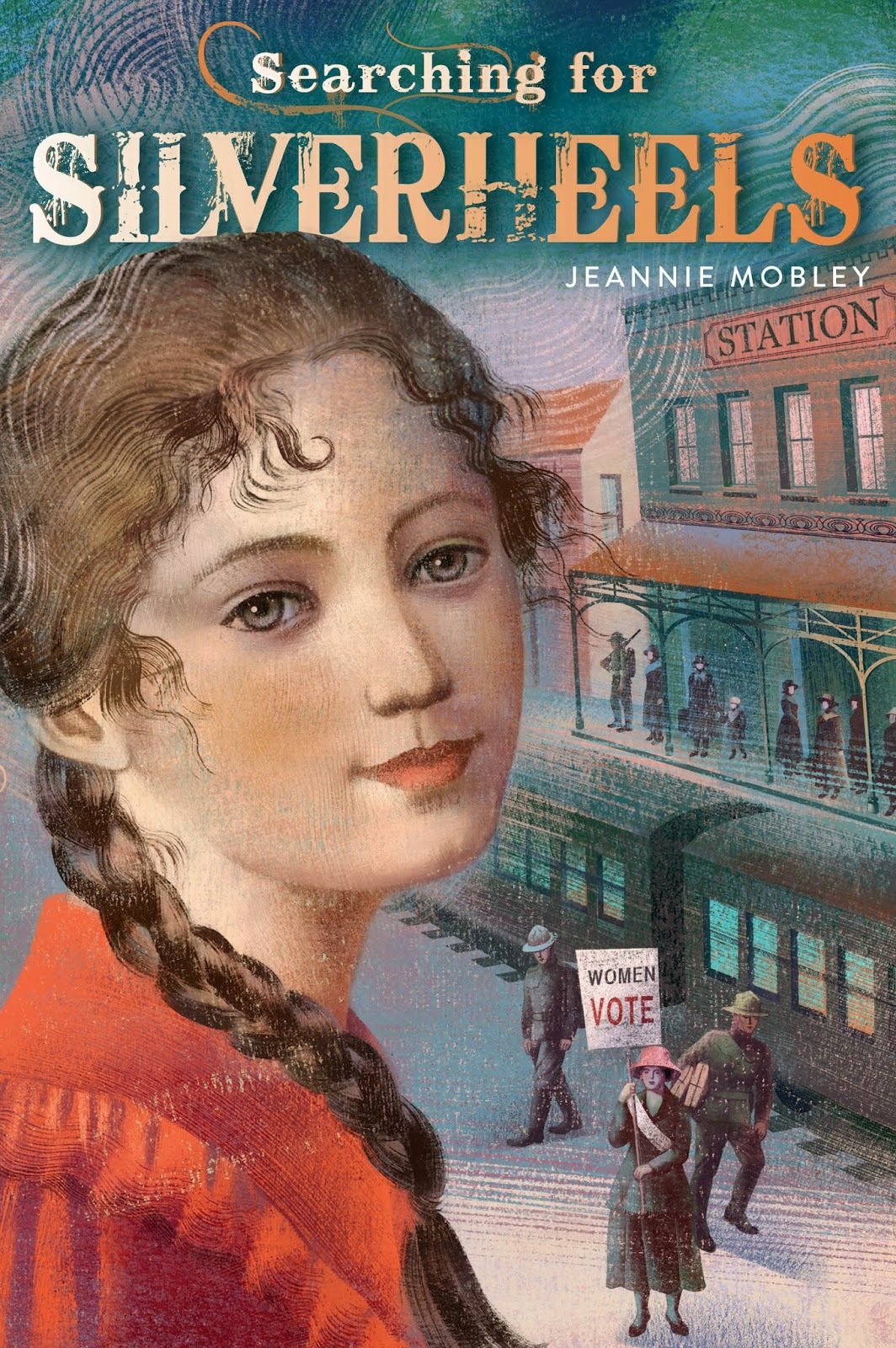 Ask and you shall receive.
Ask and you shall receive.
When I asked fellow novelists for help understanding and writing novel epiphanies, one of the first to answer my call was middle grade historical fiction novelist, Jeannie Mobley. What a gal!
As a matter of fact, I was reading the ARC of her latest book SEARCHING FOR SILVERHEELS (September 2014 from Margaret K. McElderry Books) when she responded to my question. Jeannie crafted this crystal clear epiphany primer, complete with Disney examples - she obviously understood who she was dealing with.
So please welcome celebrated author Jeannie Mobley.
I was intrigued by your recent blog post in which you asked fellow authors about how the epiphany moment was set up in their books, because I never really thought about my books having an epiphany moment. When I first read it, I actually felt a little stupid, like, "oh, great, I've been writing MG books for years and haven't even heard of this part that I'm supposed to have." Then I realized, it isn't that I don't have that moment, I just think of it differently. I prefer to think of it as the climax of the character arc, and the key moment that ties the character arc to the plot arc. Thinking of that moment as the climax of the character arc makes the question of how to set it up a bit of a non-question. If it is part of an arc, then just like with the plot arc, that climax comes out of the natural progression, flow, development of the entire story 's action up to that moment. If your book is well plotted, then you wouldn't say, "I've got this whole story, but now I have to set up three chapters of action to make a climax happen." The plot builds and builds from page one until you've got a situation that's taken on a life of its own by half way through the book and the characters are propelled along to the climax.
Likewise, the character arc should chart out the same way. Whatever the character has to resolve in the character climax (find inner courage, realize they love the guy, see who the real enemy is, outsmart the bad guy, etc.) that should be building all the way through the book. Say the epiphany moment has to be the moment the character overcome her self-doubt. In that case, the reader should see self-doubt holding her back at the beginning of the book. Because it holds her back, it causes the next thing to happen, and the next, and by 1/2 way through the book, she's struggling against it but can't quite overcome it, or she tries to overcome it and fails. Then, at that pivotal moment, the darkest moment, the do or die moment, the bad guy taunts her and says she's too weak to win, and she realized (in one or two sentences) that it's nasty voices like his holding her back, not anything inside her, and from that she puts away her self doubt, finds her courage, and rushes off to save the day. But the reader should have seen her reaching and struggling, and falling back from her self doubt all the way through the book. She doesn't see she has self doubt, but we the readers do, and so when she faces it, we all nod sagely and don't need pages and pages to fill in the details.
I'm thinking about the movie Beauty and the Beast, just because when my daughter was little I had many, many opportunities to analyze the story. The "epiphany moment" would be when the Beast is stabbed and dying, and Belle, realizing she is going to lose him, says "I love you." That's an epiphany to Belle, forced out of her by the belief that she's losing him. But to the rest of us, it is totally believable without any set up in that moment, because the whole movie has set it up. We've seen her throwing snowballs and feeding little birdies, and eating oatmeal, and dressing up and dancing and reading books with him. We've seen her tell Gaston, "He's not the beast, you are!" and Gaston replies, "If I didn't know better, I'd think you have feelings for this beast." We've seen her gaze lovingly into the mirror that shows him and heard her voice go all tender when she says "He's my friend." She's the only one who can't see that she's in love. She also doesn't know that admitting the love will break the spell, so the viewer is kept in suspense--we don't have any suspense about whether or not she's in love, we just don't know whether or not she will realize it and utter the words before the last rose petal falls.
My upcoming book SEARCHING FOR SILVERHEELS (McElderry Books, Fall 2014) has a bit of a mystery element in it, in that they are (believe it or not) searching for the truth about Silverheels--a legendary dance-hall girl that lived in the area sixty years earlier. She is also dealing with people who are accusing her friend Josie and her family of sedition during the early months of World War I. She has an epiphany for both plot elements--she has to realize that the boy she likes is really unlikable and find the strength to tell him to shove off, even if he is considered the best catch in the county, and she also has an epiphany where she sees what she's been missing the whole time to figure out the truth about Silverheels. To avoid a BIG spoiler, I am not going to tell you about that second epiphany. But the first one, finding the strength to break up with George, is set up like this:
All the way through the book, both Josie and Pearl's mom have been telling her she has to stand up for what she believes in, and we've been seeing her wrestle with that issue. This is her main flaw. The epiphany comes when Pearl's friend Josie, a suffragist, gets arrested for standing up for her rights, and George belittles her sacrifice. This isn't a big spoiler, because the reader can see that George isn't right for Pearl, and increasingly, that George isn't a very nice guy. But Pearl can see it, she's blinded by love, or more accurately, by her unrealistic, dime-novel ideas about what love is supposed to look like. She's been confused by things like her first kiss to George, which doesn't feel all sweet and wonderful like she expected, and by him putting her in an awkward position, which she y. It's this last straw moment, when George is so awful to someone she cares about, specifically because that someone has done the one thing Pearl most needs to do, that makes Pearl see what we've seen all along--the guy isn't worth it! But in the scene itself, the epiphany unfolds across the scene with a few short sentences--when George tries to put his arm around Pearl's shoulder to calm her and she steps away. When she finds the strength to tell him to leave, and realizes being strong is a good feeling. No big set up or internal pondering, just a subtle shift, a straightening of her shoulders, a new determination that makes us cheer.
So to anyone wondering how to set up an epiphany, my advice would be, look at it as the climax of an arc rather than an epiphany. Plot out the emotional element that has to come together at the climax: make sure there are scenes from the beginning that point to that pivotal moment. Let them build, double back on themselves, change directions, keep building, just like you would plot elements. Then throw in a crisis that forces a decision without waffling--a decision the MC is ripe for making (stab the Beast in the back. Or get her best friend arrested).If you've done all that, then the "epiphany" will be just that--a quick flash of self-discovery that drives us into the climax of the book, needing no big awkward set up scenes added in.
Thank you, Jeannie.
Now, fellow novelists, go have some fun with your epiphanies. And don't forget to add SEARCHING FOR SILVERHEELS to your "to read" list.
About SEARCHING FOR SILVERHEELS (from Goodreads)
In her small Colorado town of Silverheels, Pearl spends the summers helping her mother run the family café and entertaining tourists with the legend of Silverheels, a beautiful dancer who nursed miners through a smallpox epidemic in 1861 and then mysteriously disappeared. According to lore, the miners loved her so much they named their mountain after her.
Pearl believes the tale is true, but she is mocked by her neighbor, Josie, a suffragette campaigning for women’s right to vote. Josie says that Silverheels was a crook, not a savior, and she challenges Pearl to a bet: prove that Silverheels was the kindhearted angel of legend, or help Josie pass out the suffragist pamphlets that Pearl thinks drive away the tourists. Not to mention driving away handsome George Crawford.
As Pearl looks for the truth, darker forces are at work in her small town. The United States’s entry into World War I casts suspicion on German immigrants, and also on anyone who criticizes the president during wartime—including Josie. How do you choose what’s right when it could cost you everything you have?
Related Posts:
Novel Epiphanies Part 1: That part with all the dramatic music and amazing scenery ...
Novel Epiphanies Part 2
It's been a while since I posted here and I hope that this post you will give you insight into what I've been up to in terms of writing, the factors that affect my writing day and how I try to fit it all into my day, with varying degrees of success.
What am I working on/ writing
One of my biggest challenges is that my head is never quiet, even when I’m not writing or blogging. There is always
View Next 25 Posts































































